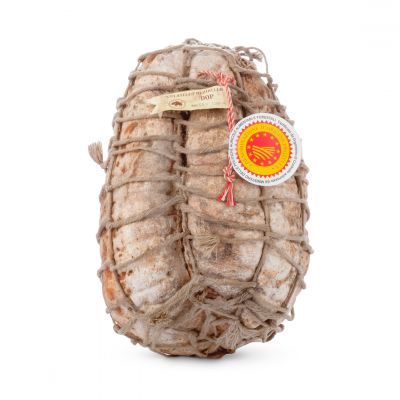Preparing the Culatello for cutting is a true ceremonial that highlights all the best features of the product
A few weeks ago we went to Soragna, in Emilia Romagna, to visit the producer Croce Delizia and with the occasion we took pictures of the several stages of Culatello di Zibello cleaning process.
We decided to dedicate this article to this traditional procedure because it is an art that is gradually getting lost.
Always less people practice the culatello leaning, both in deli shops and restaurant kitchens, but it’s part of the product identity and it’s essential to appreciate its peculiarities at best.
Before learning to clean the Culatello, however, we have to give the right value to this cured meat, remembering what it is and how it is produced. In this, we are helped by Ernestino Carraglia and his wife Isabella who, very nice and helpful, immediately welcomed us with open arms in their laboratory.
Culatello di Zibello is a DOP cured meat produced with the finest cut of the thigh of heavy pigs. 21 are the producers of the consortium and among these, Croce Delizia and 13 others received the recognition of “Antichi Produttori” (Ancient Producers – also visible on the label), with the obligation to follow a more rigid and tied to tradition disciplinary.The production happens only during the cold months, from September to March, the seasoning with salt and pepper, the maturing in natural cellars.
Ernestino works the Culatello within the evening of the slaughtering day.
The processing starts from the whole pig’s leg, from which are also get the Fiocco and the Strolghino salami. After salting and resting for about 5 days, the Culatello is stuffed into a natural bladder, sewn and tied.
The tying phase is really charming, a dance of hands and cords that creates a perfect texture, almost an armor that protect the delicious content.
During the tying, the DOP seal is attached by inserting a red and white string through the meat, to avoid falsifications. Culatello is then dried for about 60 days in a refrigerating room, hung with a net (in order to ensure a rounded shape that minimizes waste) and then transferred in the cellar for the aging. Here, the time and the typical humid climate of the area allow the development of molds, which give the Culatello its unique taste. During this period the Culatello must be brushed several times to eliminate the excess of mold and only at the eleventh month of maturation the Parma Quality Institute establishes which are suitable to become DOP and to be marketed as “Culatello di Zibello DOP”. In the case of Croce Delizia, given the presence of natural underground cellars, the Culatello continue maturing for a longer period.
And the cleaning? Let’s see it together...
1 | THE TOOLS
A protective glove to protect the hand that will hold the Culatello, a sharp knife with a small blade, suitable for boning, a cutting board as a working base, a brush to use in running water.
2 | THE SOAK
Soak the Culatello for 24 hours in a large container, with a solution consisting of half water and half dry white wine or vinegar; the liquid must completely cover the cured meat. The wine or vinegar is basically used to prevent the water from giving off a bad smell during the soaking phase. This procedure allows the Culatello to be softened so that it can be cleaned more easily. After a day the Culatello is ready for cleaning, and the liquid will be no longer clear, but rightly clouded by the release of mold, mites and impurities.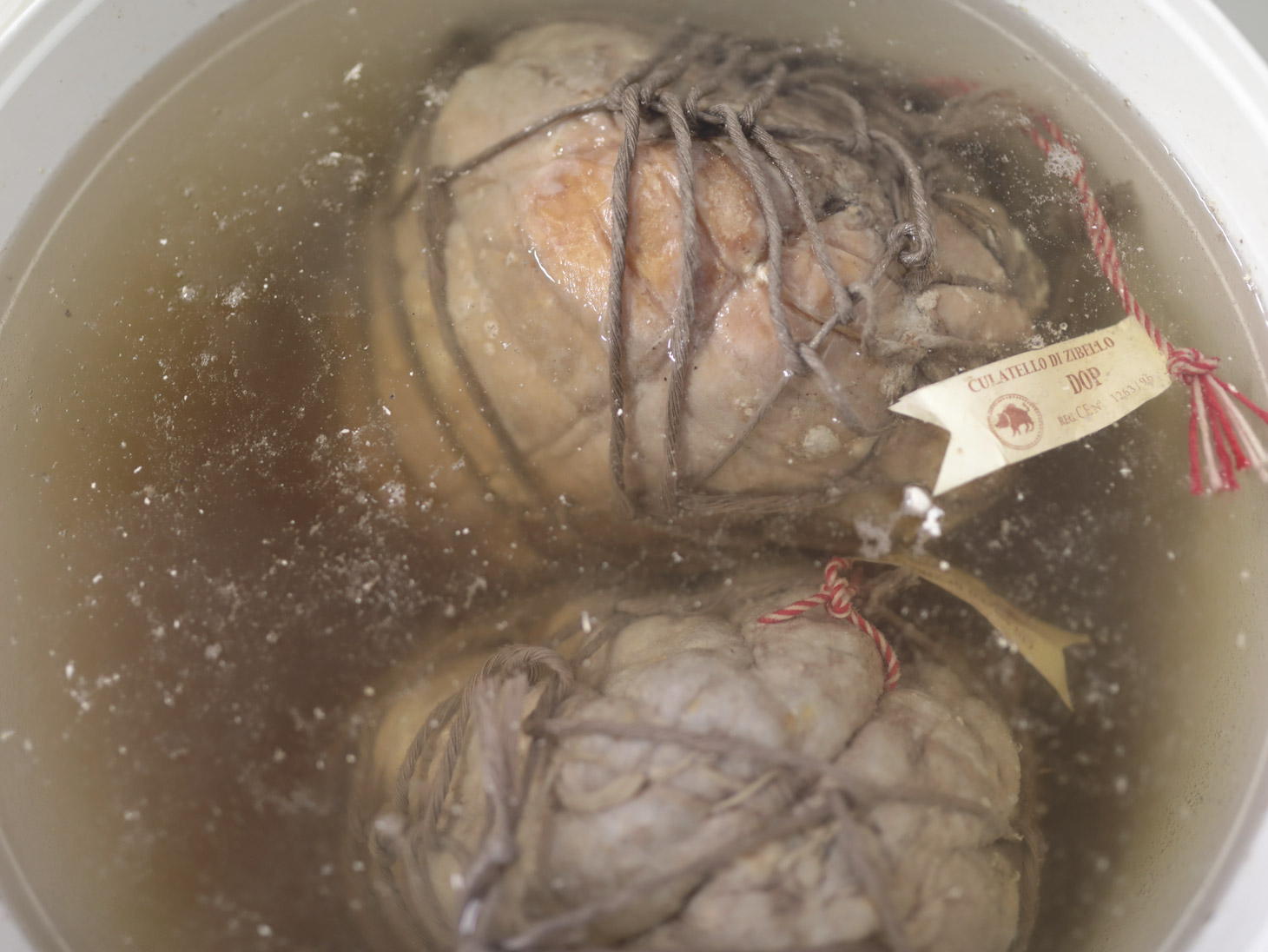
3 | CLEANING AND BRUSHING
Release the Culatello from the weft of external cords, cut the bladder and then remove it. Cut the internal cords and rinse the Culatello with cold running water, brushing it carefully to remove the mites on the surface.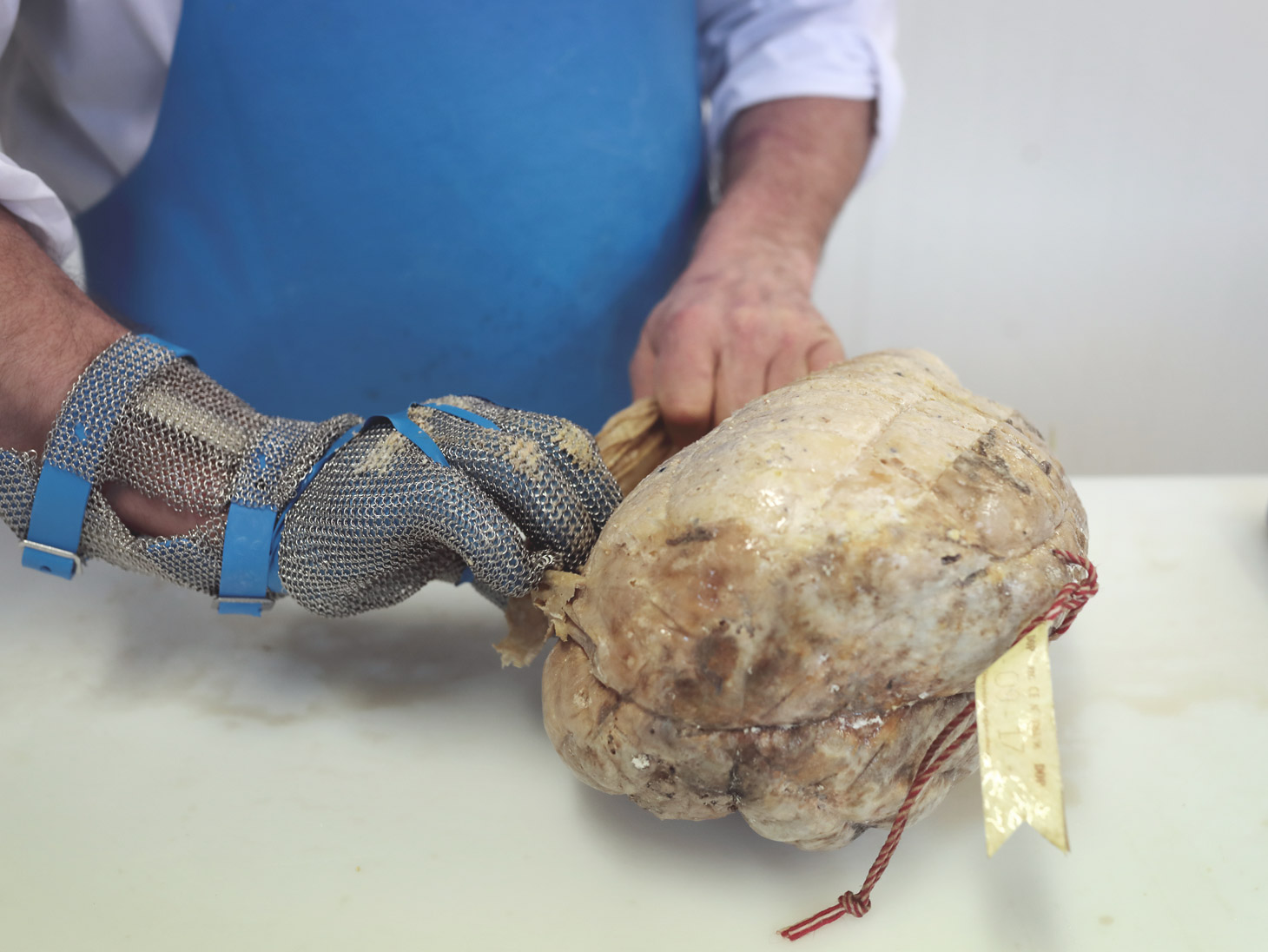
4 | THE TRIMMING
Clean the lean part by trimming with precision all the small cavities, so as to leave them free from impurities (recognizable by the darker colour) formed during the seasoning and responsible for any bad taste. The lean part must be cleaned all at once, while the fat only when needed, as for the ham.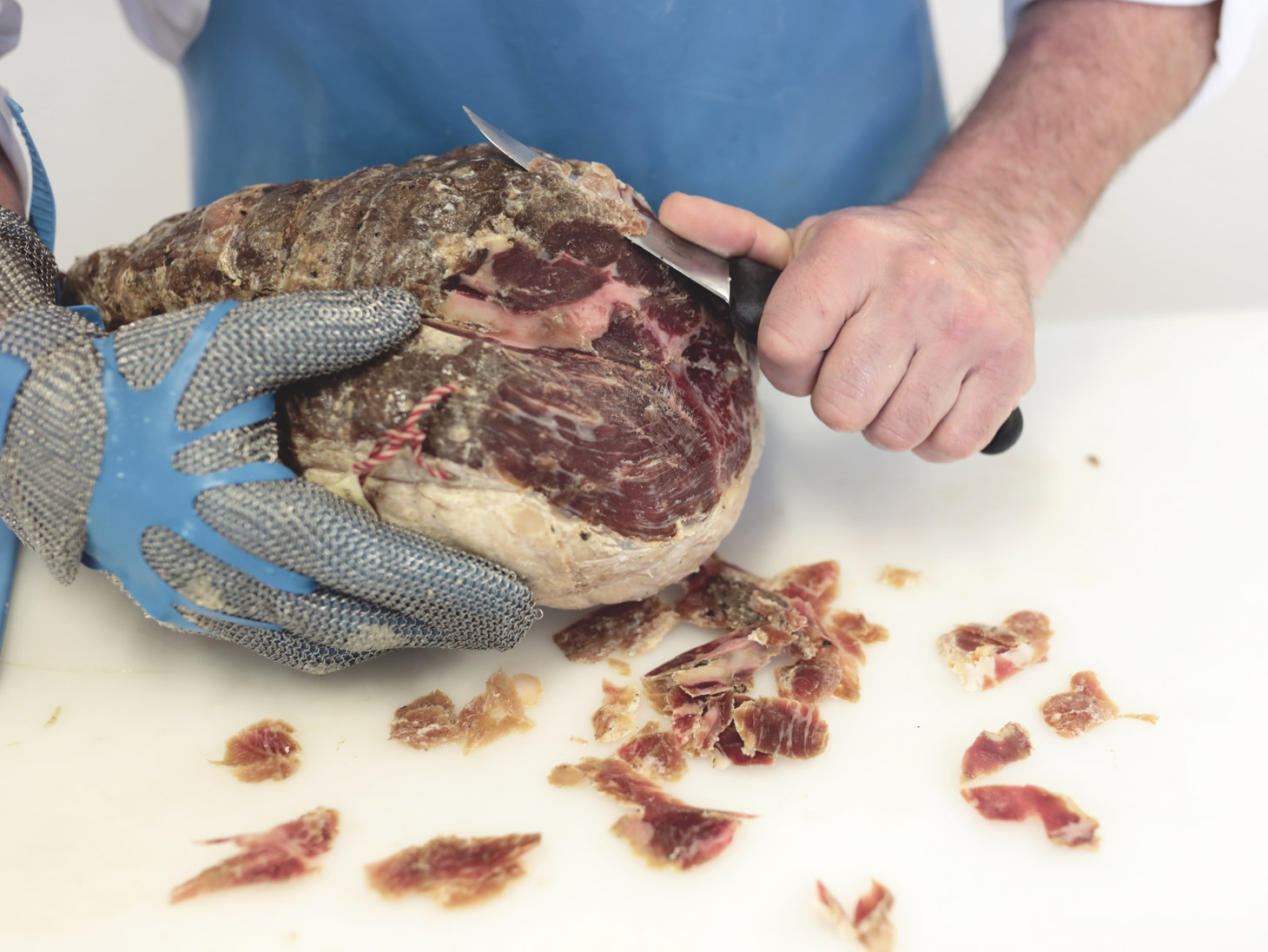
5 | THE STORAGE
Wet a cloth (or well-absorbent paper) with dry white wine and place it on top of the previously cleaned lean portion, wrap the Culatello with the plastic film and let it rest in the fridge for about 3 hours. This procedure must be done only the first time after the cleaning, in order to remove the hints of mold from the meat. As an alternative to the cloth, vacuum the Culatello with a few drops of wine in the bag. It is very important not to let it rest in these conditions beyond the indicated time, otherwise the meat risks acquiring the taste of the wine. After this step, normal storage after cutting can be done by covering the piece with the film and placing it in the refrigerator. If you do not use the whole Culatello in one time, cut it in half and put it in a vacuum, so as to use one piece of it at time!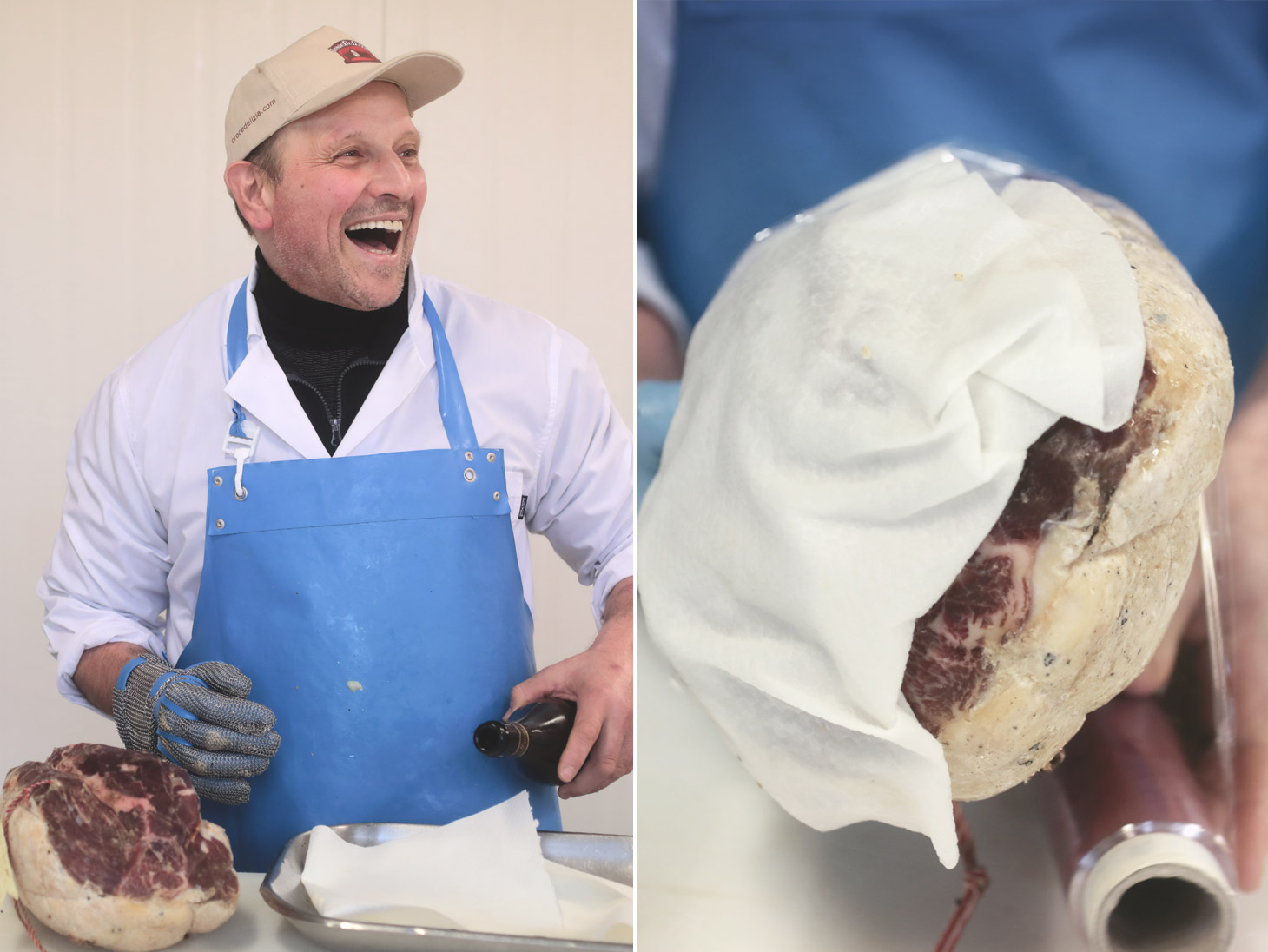
And the Fiocco?
The ceremonial of cleaning of the Culatello is the same that must be put into practice for the Fiocco. Only a difference: 12 hours of soaking are enough!
Giulia Bassetto
Marketing e Comunicazione




